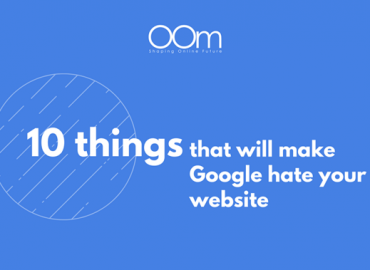There are a few mysteries in the universe that we may never get to solve. The direct route of a storm, the existence of the afterlife etc. Fortunately, changing Meta descriptions on search results isn’t one of them.

After modifying all those Meta descriptions for your pages, like the good SEO you ought to be, you might get a bit frustrated when you realize that the descriptions you’ve set sometimes wouldn’t get displayed on search.
Setting Up Your Descriptions Correctly
Technically speaking, whenever there are new pages, Google will just pick relevant or whatever content is available to display as the Description. We usually set these up (and this is of course the best practice) so that we can actually present a block of description to the search engine.
Google has been changing up rules to this recently with regards to the character limits to be exact. Right now, the safest limit is at 150 characters anything that goes past that will have just dots on the ends. Like a well written tweet, you really need to clearly describe what that specific page has and what it’s for. Yes, you can stuff your keywords in there, but don’t let that be the focus of creating descriptions. In the end of the day, Meta Descriptions are still there to describe the page. There’s no penalty for it, but if Google and other people notice that you’re just spamming the description with keywords, they’ll both remember that and have a bad view of you and your business.
Setting Your Content
The whole reason why descriptions change depending on the search term used is still the same reason. Google, regardless if you already have a Meta Description set up, picks relevant content, that can help make the search results more informative for the searcher.
That being said, it means only one thing.
Say it with me. You need:
Relevant Content
Having proper content means that you can both benefit from being a source of ripe information and the chance for Google to pick out content to display for you. So, if from the ground up, you already have content that can support search terms, you’re good to go. You shouldn’t worry too much if Google displays sections of your content at times. Its intent is, again, to make your search results more informative. If you got that information, you got to flaunt it.
Semantics
Like what I mentioned above, you need to make sure that the content you have and the description you’re making is semantically related to the search terms you’re targeting. This way, it’s easier for Google to index you or even pick out parts of your content to display on certain terms. A good hint here is to check what Google thinks is a relevant block of content when it does choose a different description, and set that up as your permanent Meta description. Adapting to what Google thinks is semantically related to you is a very good move.
Overall, Anticipate Your Reader’s Minds
At first this might sound ridiculous. Unless you’re actually psychic. But knowing your audience can actually be done through proper studies and research. Checking what they want, what the trends are, what they’re talking about or what they’re sharing can be seen on social media. Since it’s public, it’s easy to see the behavior of your audience.
Once you get a hold of that, you can start the domino effect of optimizations.
Fix your content so when Google picks parts of it to display, you’ll still get to have relevant content being displayed on search. Fix your description, so even if it doesn’t get picked by Google, every time it gets displayed, it will still show information to the searchers that’s relevant and important to them.
Giving them what they want to see and learn is the key here. In short you need to be ready on both aspects of your site’s set up. A well written description tag and content will do a lot of wonder to the overall performance of your campaign.
BONUS! There will be times that Google will decide to display addresses and phone numbers as descriptions. That for sure isn’t content focused, yes. But if you take a step back, and put yourself on Google’s shoes for a moment, it might be that Google intentionally did that so people that are searching for you can find you or contact you. Which is, again, still a very good thing. Google is helping your potential customers reach you easier. Most of the time this will happen on Mobile Users. So, information like addresses, contact number and email addresses need to be displayed and presented on home pages so when Google decides to show them, it can easily find them.


